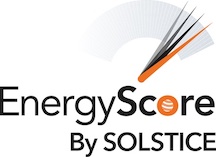Current Projects
Please hold for updates coming from my new role at FlexGen :)
Previous Projects
Plastic Pollution Spectral Modeling
Collaborated with researchers at University of Toronto to address the challenge of characterizing paint microplastics in the environment and differentiating them from non-paint microplastics. Paint is modeled to be the largest source of microplastic pollution in the environment. We have created a comprehensive Fourier transform infrared spectroscopy (FTIR) library named the Paint Library of Plastic Products (PLOPP), which includes 263 spectra from 90 different paints used in various sectors.
To enhance the identification of paint microplastics, we utilized machine learning (ML) techniques to classify spectral data as either paint or non-paint microplastics. Read more in the repo here.
EnergyScore

Solstice operates EnergyScore, a machine learning algorithm that delivers a more effective and more equitable qualification metric calibrated for renewable energy financing. Through generous support from the Tides Foundation and Google, I spent several months investigating the degree of bias existing in the algorithm, conducting a large literature review to identify leading quantitative measures of bias and fairness in ML. The paper is available open-sourced, Fairness in Focus: Quantitative Insights into Bias within Machine Learning Risk Evaluations and Established Credit Models and accompanying repository can be viewed here.
![]()
Google.org, the nonprofit philanthropic arm of the tech giant, doubled down on their support of EnergyScore by providing a grant to Solstice to fully develop the ML product while utilizing the same bias metrics and ethical AI principles I developed in the initial research linked above. We’ve collected an updated dataset of over 30 million account level data to make the model applicable in a variety of renewable energy financing scenarios. The model is currently in development and will be deployed in the coming months with a pilot partner.
Churn Model
At Solstice, we developed a churn model to predict the likelihood of a customer leaving the platform. I was responsible for the data cleaning, feature engineering, and model building. The model was built using a few different model combinations, including logistic regression, random forest, and gradient boosting. The model was able to predict churn with an AUC > 0.95. The model was deployed in production and is used to identify customers at risk of leaving the platform. You can read more about this model and other AI/ML projects at Solstice at the following press links:
- Can AI help community solar projects hold onto their customers? Canary Media
- Community solar developers look to artificial intelligence to help manage subscribers and advance equity, Energy News Network
- Inside community solar’s foray into machine learning, Latitude Media
SETO
Also at Solstice, we conducted a multi-tiered analysis of community solar prioritization and barriers to LMI access. Funding was provided by the U.S. Department of Energy’s Solar Energy Technologies Office (SETO). This research looked at potential consumers, developers and financiers, and real performing solar farms. The data analysis and github page with more details and results are available here; read our paper here where I was corresponding author.